'En Passant' is French for 'in passing'. It is a special attack by a Pawn on an opponent's Pawn.
Initially in the rules of Chess, you were only allowed to move a Pawn one square on it's first move. But today you may initially move Pawn two squares forward. See the Pawn.
The 'En Passant' move deals with the situation of 'taking' a pawn as it makes this 'double square' move. Put simply, you take the Pawn as if it had only moved one square! If you click here you will find the summary of the rules that apply to the move. |
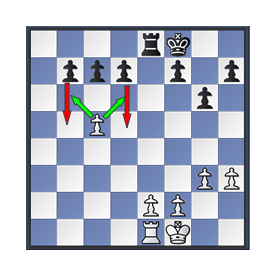 You are White and you have a White Pawn on it's fifth Rank. In front of it are some Black Pawns on their starting squares. You are White and you have a White Pawn on it's fifth Rank. In front of it are some Black Pawns on their starting squares.
Black to move. Black may move either of his two Pawns two squares or one square. The Black Pawn in between these Pawns may move only one square due to the position of White's Pawn.
If Black moves either of the two outside Pawns froward one square then your White Pawn can 'take' it. Black might therefore think that moving the Pawn two squares will be a better move - sneakily getting past your White pawn by using the 'double square move'.
If Black decides to move one of these outside Pawns two squares bringing it to the side of your White Pawn as shown by the red arrows, then you may play a special capturing move as shown by the green arrows - 'en passant'.
The double-square move by Black when you choose to employ the 'en-passant' leaves him in exactly the same position as if he had made the one-square move and you had chosen to take the Pawn. |
Here is a similar Position.
Black to move |
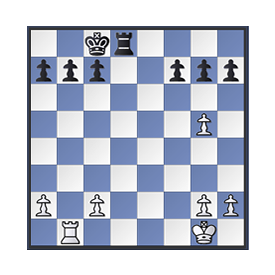 |
| Black moves a Pawn two squares as illustrated so that it is at the side of the White Pawn. |
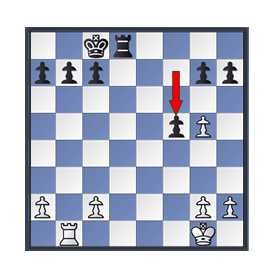 |
White to move. White captures the Black Pawn just as if it had moved only one square.
The Black Pawn is removed from the chessboard
This is the peculiar 'en passant' move.
When you take the opponent's Pawn this way it is polite to say 'en passant' to your opponent, as you do it. |
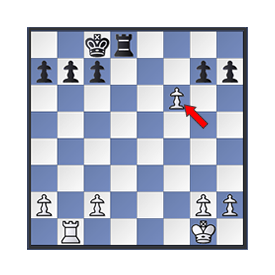 |
| Similarly if Black had moved this outside pawn 2 squares instead. Then: |
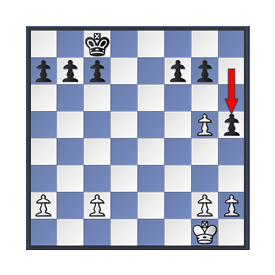 |
| The Black Pawn can be captured e.p. (en-passant can be abbreviated to e.p.) and removed from the chessboard. |
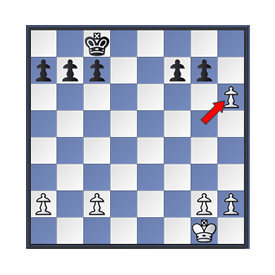 |
| If Black had moved this Pawn as shown, no capture e.p. takes place. You may only capture e.p if your opponents Pwn moves two squares at once to the side of your Pawn. |
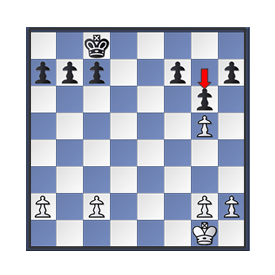 |
| You may only capture 'en passant on the next move after your opponent's Pawn has moved to the side of your Pawn. If you do not capture it on the very next move you have lost the chance to do so. You can never capture e.p. the Pawn your opponent moved 2 or more moves ago. |
| Black to move |
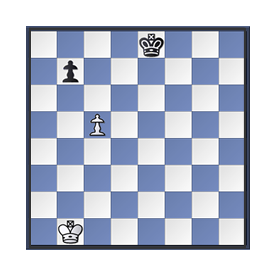 |
| Black moves two squares forward alongside the White Pawn. |
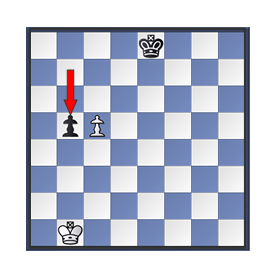 |
| The White Pawn takes 'en passant', removing the Black Pawn from the chessboard.. |
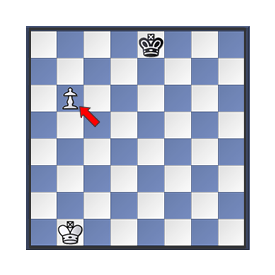 |
Here is a White Pawn on the fifth rank facing two Black Pawns. One of these Black Pawns is able to move forward two squares.
Black to move. |
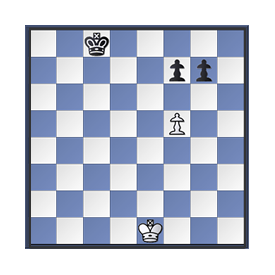 |
| Black moves a Pawn forward two squares alongside the White Pawn. |
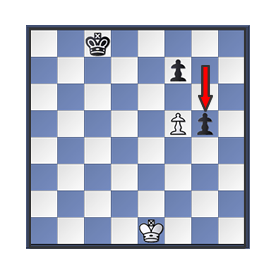 |
| White replies by capturing 'en passant'. |
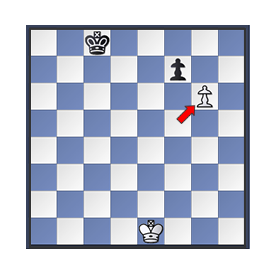 |
Here is an example from Black's perspective. The Black Pawn is on the fifth rank
It is the White Pawns first move it is allowed to move two squares if it wishes. |
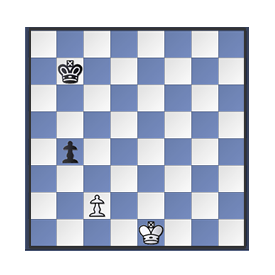 |
| The White pawn moves two squares forward alongside the Black Pawn. |
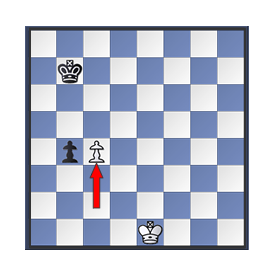 |
| Black takes the White Pawn 'en passant'. |
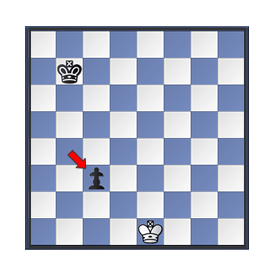 |
You do not have to capture 'en passant' if you do not wish too. You could move your Pawn forward instead ar move another piece.
Black to move. |
 |
| Black moves and now White may capture 'en passant'. |
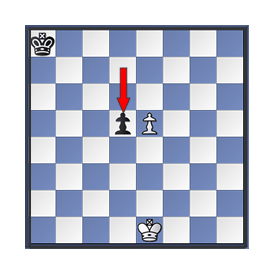 |
| White decides to move on instead which is the best move here. |
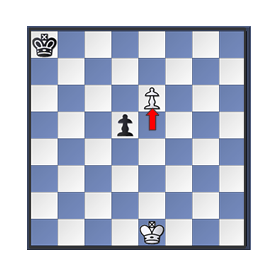 |






 You are White and you have a White Pawn on it's fifth Rank. In front of it are some Black Pawns on their starting squares.
You are White and you have a White Pawn on it's fifth Rank. In front of it are some Black Pawns on their starting squares.

















 DISCLAIMER: The information given in this site is presented in good faith, but the site-author is human and does make mistakes! Should you find anything that you believe is in error please notify the Webmaster of your finding.
DISCLAIMER: The information given in this site is presented in good faith, but the site-author is human and does make mistakes! Should you find anything that you believe is in error please notify the Webmaster of your finding.